Voluntary Benefits Voice







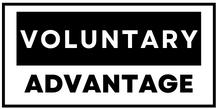
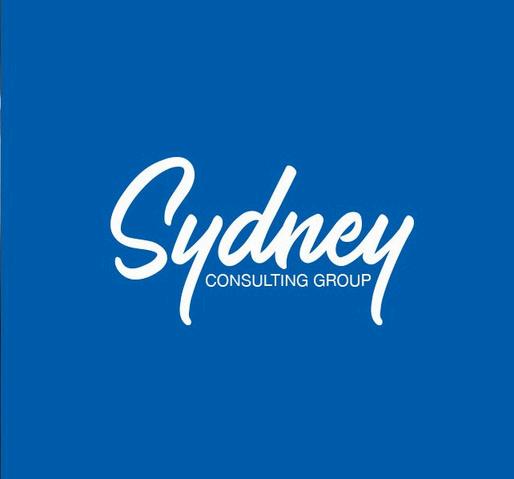
Jennifer Daniel Aflac

Jack Holder EBIS

Paul Hummel

Rachel McCarter Mercer


Editors
Heather Garbers | Trevor Garbers
For Media and Marketing Requests Contact:
Heather@voluntary-advantage com
Trevor@voluntary-advantage com
Mailing Address
10940 S Parker Rd #257 Parker, Colorado 80134
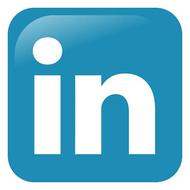
Steve Clabaugh CLU, ChFC
Mark Rosenthal PwC

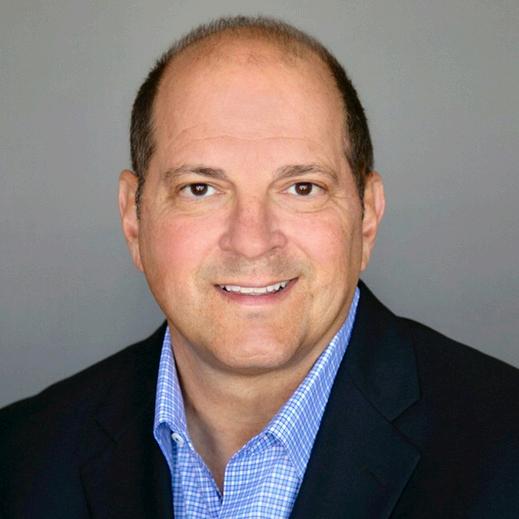
Seif Saghri Founder
Tim Schnoor Birch Benefits
Sydney Consulting Group A d v i s o r y B o a r d


Hunter Sexton, JD, MHA

NavigatingtheEvolvingBenefitsLandscape: MeetingtheNeedsofEmployersandTheirWorkforces
BoostingSelf-ServiceEnrollmentEngagement—WithJust OneWord
TransformingBenefitsStrategy:HowTechnologyandThirdPartyExpertiseElevate EngagementandEnrollment
PatrickLearyRetiresAfter36Years: ACareerofInsight,Leadership,andLastingConnections RelationalLeadership:Don’tBecomeA“RogueGhost”
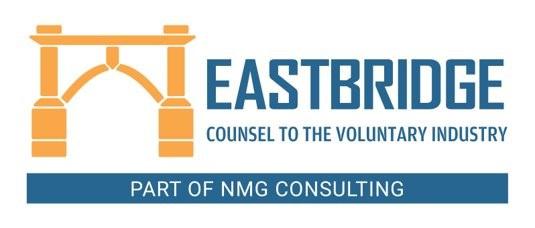
IfYouBuildIt,TheyStillMightNot Come:WhyAGoodBenefits PackageAloneIsn’tEnoughTo DriveEmployeeParticipation

OpenEnrollmentIsn’tEnough: CreatingYear-RoundBenefits EngagementPlans
Our 2025 Virtual Conference is officially a wrap and what an incredible event it was! Thanks to the thought leadership and collaboration of the Advisory Board and Presenters, this year’s conference delivered rich insights, bold perspectives, and meaningful dialogue across every session Each year, we walk away inspired and informed and this year was no different Here is an overview of the lessons learned in a few of the sessions:
We kicked things off with The View from the Top, featuring industry leaders who explored the current pace of innovation in voluntary benefits. Their message was clear: we’re witnessing an industry that is not only evolving rapidly but is also unified in its commitment to the consumer Panelists highlighted the transformative role of artificial intelligence and API integrations technologies that are no longer on the horizon, but already reshaping how we deliver and experience benefits

Julie Johnson, Krystie Dascoli, Mike Rose, and Paul Hummel tackled the increasing scrutiny advisors face from clients and regulators alike Their session was a masterclass in balancing priorities showing how the brokerage community is evolving to meet heightened expectations, all while maintaining strong, collaborative relationships with carrier partners
Ben Yoomtob’s session dove into the complexities of benefits administration technology. He raised critical questions around data ownership and its role in closing the care perception gap A standout point from his talk was the challenge our industry faces with API adoption, which continues to be held back by carrier legacy systems or as Ben fittingly calls it, “outdated infrastructure”
Jeff Caldwell and Sina Chehrazi led an engaging and transparent conversation around claim integration From practical limitations to widespread misconceptions, they covered it all and offered a compelling look at where this aspect of our industry is headed.
As we reflect on this year’s conference, one thing is clear: the voluntary benefits industry is not standing still. From data-driven innovation to smarter systems and a sharper consumer focus, we are building a stronger, more responsive future The momentum is real and it's powered by people and partners who believe that innovation is the key to unlocking what’s next Here's to a future shaped by fresh thinking, deeper collaboration, and technology that truly works for people
If You Build It, They Still Might Not

By Eastbridge Consulting Group
Employers know that a competitive benefits package is essential to attract and keep the top talent they need to succeed So they work with their brokers and benefit carriers to build a solid plan with affordable benefits employees want and need Yet too often, the plan falls short of a home run because it’s missing a key element: an effective benefits communication and enrollment strategy
That’s the observation of voluntary benefit carriers Eastbridge surveyed for its recent “Understanding Voluntary Participation Rates” Spotlight™ report These carriers say the most important factor limiting participation rate improvement is the lack of employer-level commitment to the proposed education, communication and enrollment strategy. In fact, carriers cite this reason nearly twice as often as any other.
Not only that, the next two reasons carriers mention most often also relate to inadequate communication:
1 Limited enrollment communication options and timeframe
2 The lack of broker commitment to the education, communication and enrollment strategy
Employers continue to lean toward electronic methods for voluntary benefits education and communication. A website or mobile app is by far the most common communication tool, according to Eastbridge’s most recent “MarketVision™ The Employer Viewpoint” report, followed by sending literature, emails or text messages to employees.

Less than one-quarter of employers say they prefer group meetings followed by a one-onone with employees, and one in five employers say that they would like decision support and benefits education technology to be available year-round
Brokers also tend to default to electronic benefits communication tools: Two-thirds of brokers in a recent Eastbridge study say literature, emails or text messages were their most common tools last enrollment season However, more than half relied on call centers or voluntary group meetings (A website or mobile app doesn’t appear on the list for brokers as those tools tend to be controlled by employers rather than brokers.)
Employees are less enthusiastic than their employers about using company websites or mobile apps for benefits communication. A recent MarketVision The Employee Viewpoint report shows only 21% of employees rank using the internet or an intranet as one of their top three preferred ways to learn about voluntary benefits Information sent by their employer ranks highest, but nearly one-third prefer some form of personal communication, either speaking with someone in person, by phone, video meeting or online chat
Digital and self-service options also are growing trends for benefits enrollment. Selfenrollment on a website or mobile device is the go-to choice for employers: 53% of employers say it was their most recent enrollment method, and even more 56% say they prefer that method for future voluntary enrollments. That number is up significantly from just two years ago, when it was the top preference for 37% of employers, barely edging out an enroller completing forms on a computer And brokers overwhelmingly name online self-service as their most recent enrollment method, cited by 70%
However, many employers also say they prefer some type of in-person interaction during the enrollment The number that prefer an enroller to complete forms on a computer alongside the employee is up slightly to 38%, and another 20% would like a human resources representative to enroll employees.
Brokers also show significant use of personal enrollment methods, with more than a third listing onsite one-on-one meetings or call center enrollments Employers show very low preference for passive or live telephonic enrollments, but both groups agree paper enrollment processes, whether assisted or not, are declining.
About half of employees surveyed also prefer to enroll on their own online, but as with benefits communication, nearly a third want some form of personal assistance, whether they’re enrolling on paper, a computer, by phone or in a virtual meeting



Only a few carriers surveyed by Eastbridge track their participation rates by enrollment method, but those that do report one-on-one, face-to-face enrollments generate the highest participation (31%). Despite that, employers and brokers continue to lean heavily on internet self-service enrollments. It’s not surprising, then, that carriers also cite decreased in-person access to employees as one of the top factors preventing better participation in workplace benefits programs
Carriers, brokers, employers and employees alike would benefit from stronger participation in workplace benefit programs To create that win-win-win-win outcome, our research indicates building the best benefits program should also include a strong focus on creating and a commitment to implementing the most effective communication and enrollment strategies


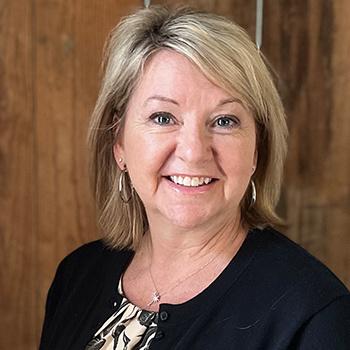
Nick Rockwell Senior Advisor Danielle Lehman Senior Consultant
Eastbridge is the source for research, experience, and advice for companies competing in the voluntary space and for those wishing to enter. For over 25 years, they have built the industry’s leading data warehouse and industry-specific consulting practice Today, 20 of the 25 largest voluntary/worksite carriers are both consulting and research clients of Eastbridge


By PES Benefits
For years, benefits communication has revolved around one noisy, chaotic season: open enrollment. But in 2025, that outdated approach is leaving employees confused, underinsured, and vastly underutilizing their benefits. Now, more than ever, brokers have a remarkable opportunity to lead their clients into a new era of consistent, strategic, and empathetically timed engagement one that actually meets employees where they are, all year long
Today’s employees are overwhelmed According to a 2024 survey by Equitable, 53% of Americans regret the benefits selections they made during the previous year’s open enrollment Many cited poor understanding of their options and not updating their coverage when life circumstances changed (Equitable, 2024).
That kind of regret translates into dissatisfaction, low utilization, and missed opportunities for both employees and employers.
That’s a huge gap and one brokers are perfectly positioned to help fill.
Limiting communication to open enrollment ignores the way real life happens Employees don’t wait until November to get sick, get married, have a baby, or experience burnout Yet so many still don’t realize what support is available to them until it’s too late to act
This results in:
Higher out-of-pocket expenses
Increased dissatisfaction with benefits
Low ROI for employers offering valuable programs no one uses
A powerful year-round benefits engagement plan should be:
Seasonal: Highlight mental health tools during Mental Health Awareness Month or promote FSA usage during back-toschool season.
Milestone-Based: Trigger communications for life events like onboarding, turning 26, or returning from leave.
Data-Driven: Use utilization and engagement data to reinforce underused resources with customized outreach.
And most importantly it should be simple, accessible, and human
Brokers have an incredible opportunity to move from service provider to strategic advisor by helping clients:
Build an editorial calendar of communications
Automate messaging tied to benefits usage trends
Recommend platforms that support push notifications and app alerts
Pair digital tools with access to live benefit navigators or counselors
By helping clients extend their communication beyond open enrollment, brokers can ensure employees are not only informed but empowered.

PES Benefits is dedicated to revolutionizing the employee benefits landscape with cutting-edge technology, administration, education, and virtual care solutions Since its inception, PES Benefits has focused on simplifying the benefits experience, making it more accessible and meaningful for all involved.

By Heather & Trevor Garbers
As today’s workforce continues to evolve, so too do the expectations around employee benefits and how they’re communicated For organizations with over 1,000 employees, the complexity of delivering impactful, personalized benefits communication has never been greater or more critical. Employers are under growing pressure to not only offer a diverse and competitive benefits portfolio but also ensure that employees fully understand and engage with what’s available to them.
According to MetLife’s latest Employee Benefit Trends Study, the demand for broader benefits choices and more personalized communication is surging, even as confusion and disengagement remain persistent challenges
In this article, Taryn Wright, Vice President of Workforce Engagement at MetLife, shares insights into the latest trends, how communication strategies have evolved, and what steps the industry must take to better support both employers and employees in the large-case market segment.
Taryn, what do you see trending in the benefits and communication side of our industry?
“The benefits landscape is rapidly evolving, as employees seek more support from their employers and benefits programs
BasedonMetLife’slatestEmployeeBenefit TrendsStudy,keytrendsweareseeinginclude anincreasedbenefitsdemandamong employees,as61%ofworkersareinterestedin havingawiderarrayofbenefitschoices,and 41%believeexpandingtherangeofbenefits offeredwouldimprovetrustintheiremployer.
Based on MetLife’s latest Employee Benefit Trends Study, key trends we are seeing include an increased benefits demand among employees, as 61% of workers are interested in having a wider array of benefits choices, and 41% believe expanding the range of benefits offered would improve trust in their employer
Despite rising demand, we also continue to see a persistent lack of benefit understanding across employee groups, with 52% of employees saying they do not fully understand their benefits, and 56% wishing they were more informed to get the most value out of them Similarly, we also know employees want more personalized support when it comes to their benefits elections and how to use them effectively, with 43% saying benefit communications are not relevant and 38% struggling to understand them, up 6 percentage points from last year. Most employees (64%) are willing to share personal information to receive more tailored benefits communications from their employer”
How have communication needs evolved for this segment of the marketplace over the past few years?
According to Taryn, “Over the past few years, communication needs for this segment of the marketplace have evolved significantly, but today’s current benefits communications often remain a key barrier to understanding and engagement
This is in part due to outdated and generic “one-size-fits-all” benefits communication strategies that lack personalization.
Benefit communications need to evolve to bridge the confusion gap that exists across all employee demographics, reaching them with benefits guidance and support that’s tailored to their personal needs and life stage not only this, but communications can be formatted or delivered in ways that resonate best with their intended audience, and this often varies by generation For example, MetLife’s latest research found Gen Z employees tend to prefer short-form communications akin to social media and messaging platforms, and have an affinity for digesting information through videos and podcasts more than their older peers Delivering real-time digital communications such as short videos and other bite-sized formats may resonate with this cohort and be more effective when reaching Gen Z employees

Employees want more consistent communications, too, with 68% saying they want communications to continue post-enrollment throughout the year
Employees are also seeking more connection between their benefits to limit confusion and increase simplicity when navigating their packages but while 74% of employees say it is important that their employee benefits are connected to each other, only 64% feel their benefits are well connected Employers can help draw connections through their benefits communications by helping to illustrate how benefits can work together and in complementary ways so that employees feel they are getting the most value out of their full benefits package.”
How can the industry evolve to better meet the needs of clients and employees?
Taryn shares that, “Employers have a major opportunity to work closely with carriers to develop and deploy more effective benefit communications strategies We know that tailored benefits communications strategies improve employees' understanding of their benefits and deliver ROI on benefit programs for employers according to MetLife’s latest research, when employees completely understand their benefits, they are more than 2-times as likely to feel holistically healthy. However, we also recognize that today’s HR teams are often doing more with less and may not have the bandwidth or ability to effectively communicate and even track engagement of their benefit programs.

Partnering closer with carriers can help employers capitalize on carrier knowledge and resources in ways that enhance communications and drive better outcomes With more trust and co-collaboration, carriers and employers can deliver digital benefit communications strategies with the goal of decreasing the confusion gap, increasing the value of benefits, and ultimately improving the holistic health of today’s workforce”
As the expectations of employees continue to evolve, so must the strategies employers and carriers use to engage them.
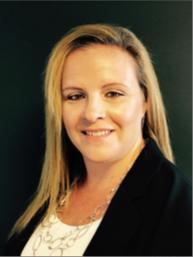
Technological innovations in the market today present a unique opportunity to lead the way in transforming benefits communication from generic and transactional to personalized, strategic, and impactful By embracing data-driven insights, digital tools, and closer collaboration between employers and carriers, we can bridge the understanding gap and deliver benefits experiences that truly resonate with employees The result? A more informed, empowered workforce and a stronger return on investment for organizations The future of employee benefits lies not just in what is offered, but in how effectively it is communicated and now is the time to lead that change.
Taryn Wright - Vice President of Workforce Engagement, MetLife: Taryn and her team execute effective enrollment campaigns and drive employee engagement of MetLife’s robust benefits offerings, including financial wellness. She is responsible for developing and implementing strategies to increase Enrollment and Re-Enrollment, aimed at simplifying benefits education and improving understanding and utilization.

By Tom Smith
Ten years ago, enrolling in voluntary benefits was a personal process Brokers and HR reps met face-to-face with employees, walking them through coverage options and helping them make real-time decisions.
Fast forward to 2025, and that landscape looks very different. The pandemic accelerated the shift toward self-service, online enrollment giving employees unprecedented autonomy. But that independence often comes at a cost: outdated platforms, unclear communications, and disengaged employees who skip over key benefit opportunities
For brokers and employers, the challenge is now clear: How do we reengage employees in a digital enrollment environment? Surprisingly, the answer may come down to one powerful word: “No.”
Behavioral economics reveals an interesting truth when individuals are required to actively decline something, they instinctively pause to consider it. It’s known as the regret of saying no a moment of reflection that sparks deeper evaluation of risk versus reward
Without this prompt, employees often bypass benefits entirely But when asked to say yes or no, they engage even if briefly That moment can be the difference between missed coverage and a confident, informed choice
Take long-term care insurance, for example Left unchecked, an employee might overlook it But when required to decline, they stop and think: Would I need this someday? Could I afford care out-of-pocket? That reflection often drives more “yes” decisions and better coverage outcomes
When my daughter went to college, I received several emails about tuition insurance. Like many parents, I ignored them. That is, until the school required a decision. Suddenly, I read the fine print, I started to weigh the risks and realized the value. I signed up immediately.
The same principle applies in the workplace: when employees are asked to actively accept or decline benefits, they become more engaged, thoughtful participants in the process
Passive enrollment models often fall short not because of bad intentions, but because they rely too heavily on default behaviors. Adding a single requirement a “yes” or “no” decision can dramatically shift the outcome
This small change helps:
Improve participation rates
Broaden risk pools
Reduce confusion during open enrollment
Enhance employee satisfaction and confidence
For brokers, it’s a strategy worth advocating Encouraging clients to require an answer helps ensure their workforce makes informed choices and doesn’t miss out on valuable protection.
In an era where self-service is the norm, prompting a decision brings back the engagement of traditional enrollment no in-person meetings required.
And sometimes, “no” is exactly what it takes to get to “yes”
Tom Smith - Vice President, Enrollment Services, Trustmark: Tom Smith joined Trustmark in November 2024 as Vice President of Enrollment Services. Before joining Trustmark, Tom led Enroll for Life, now a product of Trustmark Voluntary Benefits, an enrollment solution for offering insurance plans designed to provide living and legacy benefits for immediate and long term asset protection.


In today’s voluntary benefits landscape, brokers are tasked with more than just spreadsheeting carriers for their employer clients they must also ensure that the carriers they partner with can deliver their products efficiently, flexibly, and reliably For too long, outdated technology has created frustrating obstacles, both for brokers trying to manage plans and for employers and employees using them These challenges, deeply rooted in carrier legacy admin systems, have become almost accepted as the norm But they don’t have to be
Imagine a world where enrolling in benefits is seamless, where systems communicate effortlessly with one another, and where updates and changes don’t cause major disruptions
This isn’t just a dream it’s possible with the right technology. Some carriers are already making this a reality, and brokers who understand and insist on these technologies will be better equipped to serve their clients and solve the industry’s most persistent problems.



Anthony “Tony” Grosso Head of Growth / GWB Insurance Markets
Tony has over 25 years of hands-on experience leading innovation, business development, product and marketing across all sectors of the insurance industry Tony is leading the GWB market for EIS, a high growth company, helping Voluntary Benefits insurers to achieve their ambitious plans and incredible potential

Let’s face it: we all know legacy systems are holding insurers back
This is why it’s our mission as a coretech supplier for insurers to stop that problem in its tracks. Our cloud-native SaaS platform is built to catapult insurers past old, legacy limitations, and to truly future-proof their technology ecosystem so their business model, product offers, and ways of serving their customers are never held back again, so they can have the truly agile operations of a tech company, rather than a legacy company stuck in decades past Learn more at www eisgroup com

By John Allen
In today’s rapidly evolving workplace, benefits engagement and enrollment strategies are undergoing a transformation, fueled largely by advancements in technology. As HR teams contend with how to create a more personalized, data-driven experience for employees, the role of technology has become more important than ever The transformation is not only enhancing how benefits are communicated and administered, but it is also reshaping the role third- party enrollment firms play in supporting clients with engagement and enrollment strategies
Technology has ushered in a new era of benefits engagement by making information more accessible, understandable, and actionable
Through the support of third- party enrollment firms, who have embraced advancements in technology and have the talent to create innovative solutions, organizations can leverage their expertise in the following ways
Employees now expect 24/7 access to their benefits information Self-service platforms and mobile apps allow users to view, compare, and enroll in benefits at their convenience. These tools also include decision support features, such as plan comparison tools, cost estimators, and guided wizards that help employees select the best-fit plans based on their personal circumstances. Self-service portals can be enhanced by third-party enrollment firms who understand their architecture and can provide expert guidance on how to configure them and enhance the employee experience
Artificial intelligence and machine learning are enabling more personalized benefits recommendations. By analyzing employee demographics, past benefits selections, and predictive healthcare usage, AI-driven platforms guide users toward choices that best align with their needs and financial situation.
Communication has moved beyond static brochures and emails Employers are recognizing the value third-party enrollment firms offer in creating digital strategies that include dynamic microsites, chatbots, SMS reminders, personalized video content, and even customized AI generated videos to drive engagement
At EOI, we use advanced analytics to track the performance of the communications, providing valuable insights and recommendations for continuous improvement Email and text campaign analytics include items such as delivery rates, open rates, and click rates down to the individual level Microsite and poster analytics include items such as page views, time spent viewing, and QR code scans These tools help reinforce key enrollment messages and deadlines, optimize their effectiveness and in turn increase participation rates and employee satisfaction
Employers and HR professionals now have access to real-time data analytics that track engagement levels, enrollment trends, and benefit utilization. These insights allow for timely interventions and help fine-tune benefits offerings and communication strategies for maximum impact
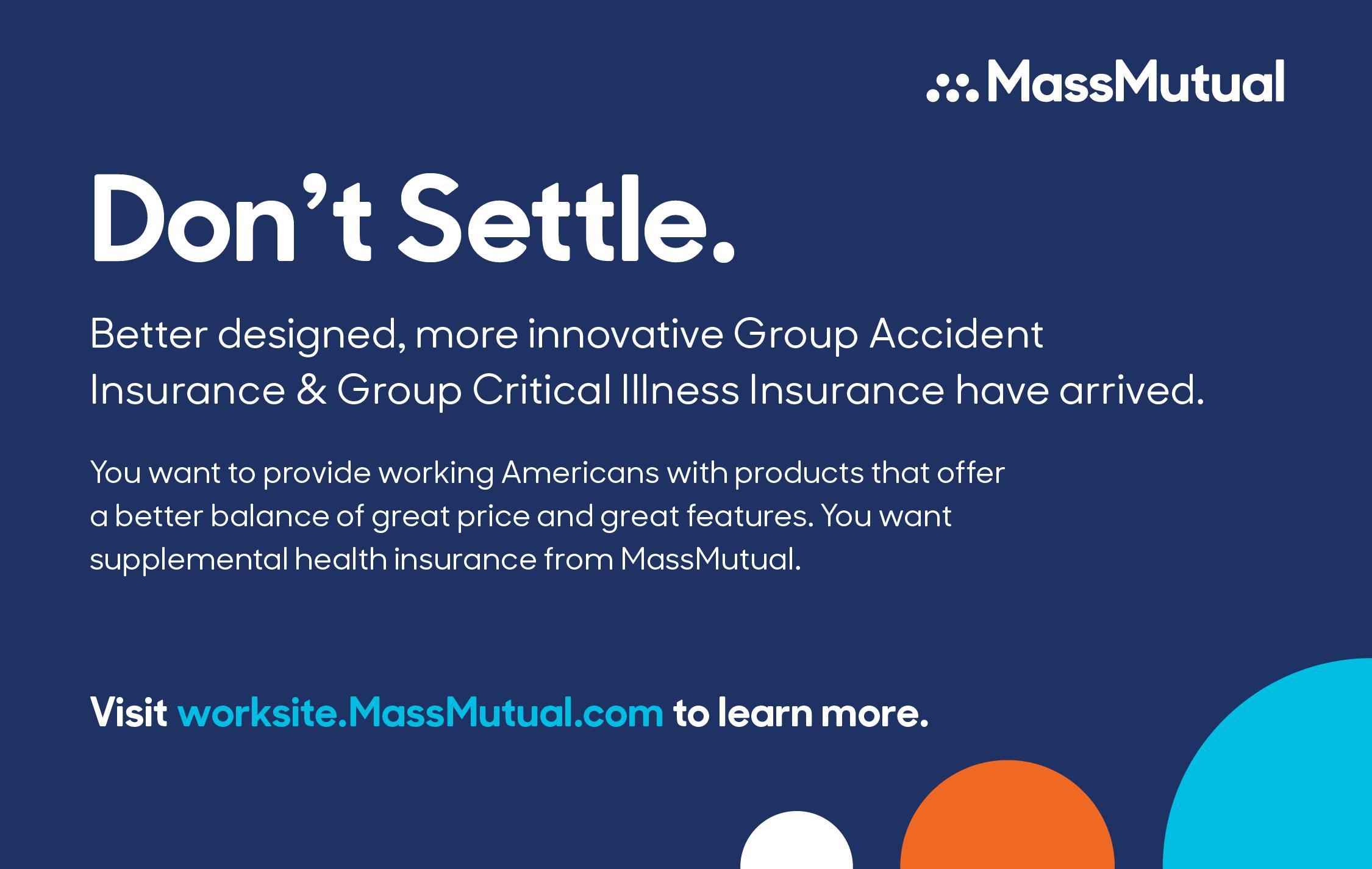
EOI has made significant investments to better serve our partners and clients Our virtual call center now includes advanced technology paired with Human Capital to deliver an enhanced employee experience.
AI allows our internal account management team to better monitor each benefit counseling session for an improved employee experience Live-monitoring allows us to react quickly and make real time adjustments to improve the employee experience
Pace and keyword monitoring
Voice tone and reaction monitoring
Live dashboards help us monitor and manage call volumes, call length, hold times, and more in real time. Paired with our online scheduling platform, we can leverage data to better prepare for the future.
Native CRM allows for both inbound and outbound contact tracking
Appointment status, including booked, completed, no-show, and open appointments

New features allow for a better employee experience. Spam remediation with custom call branding - Real time masking with custom name display HD voice quality with ongoing bandwidth checks No more waiting on hold - callers can opt for a call back or a text message with a link to schedule an appointment
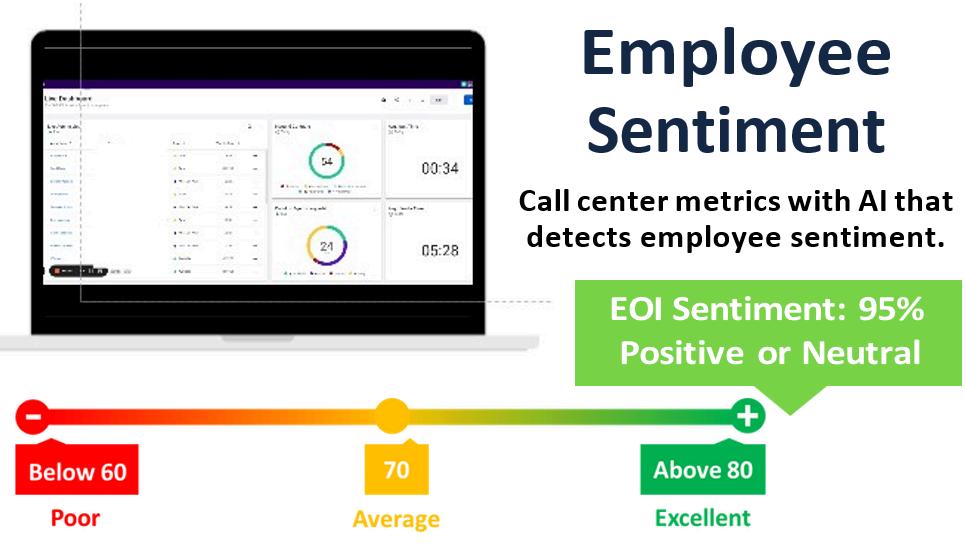
While third-party enrollment vendors have traditionally played a critical role in guiding employees through the complex benefits selection process, the need for this type of support is shifting
More Strategic Partnerships: Rather than providing transactional support, third-party vendors are now expected to bring strategic value offering robust technology platforms, data insights, and consulting on benefits design and communication strategies
Shift to Hybrid Models: Some organizations still value the human touch, particularly for complex benefits or when dealing with less tech-savvy populations. As a result, many are adopting hybrid models that combine digital tools with live, virtual, phonebased, and on-site support.
Focus on Compliance and Integration: With the increasing complexity of regulatory requirements and the need to integrate benefits platforms with payroll and HRIS systems, third-party vendors are increasingly viewed as technical partners who ensure compliance and system interoperability

As technology continues to evolve, we can expect even more sophisticated solutions like predictive analytics, augmented reality for benefits education, and voice-activated assistants. Employers who embrace these innovations will be better positioned to meet the diverse needs of their workforce, improve the employee experience, and maximize the ROI of their benefits programs
The role of third-party enrollment support will continue to adapt, focusing less on manual tasks and more on enhancing digital strategies paired with human capital
Technology is reimagining benefits engagement and enrollment, offering smarter, more personalized, and more efficient ways to connect employees with the resources they need The need for traditional third-party enrollment support will continue to evolve as firms who embrace technology and provide clients with expert guidance will continue to remain a vital partner both for organizations and their employees. Of equal importance, striking the right balance between technology and human support will be necessary in order to navigate the complexities of modern benefits management
John Allen - Executive Vice President, Sales, EOI Service Company - executes and develops strategic marketing initiatives on a national level, specifically focusing on the enhancement of value-added services that EOI provides for its clients Since joining EOI in 2009, John has played a key role in the area of strategic marketing, building an outstanding implementation team in the Chicago office and tripling sales in the Midwest region


By Heather & Trevor Garbers
Patrick Leary, LLIF has announced his retirement from LIMRA and LOMA, where he is currently the Corporate Vice President for Workplace Benefits Research
Pat has had an incredible impact on our industry during his career and we owe it to him to recognize and celebrate his contributions Let’s get to know more about the man behind the stats
He grew up in Simsbury, Connecticut, a suburb of Hartford, where he graduated from Simsbury High School before attending Hartwick College in upstate New York, majoring in economics and business, with a minor in history, later earning his MBA from the University of Connecticut.
He started as a platform rep at a bank, before responding to an ad and taking on a “short term gig” as an entry level research analyst at LIMRA That “short term gig” turned into a 36-year career spanning research and consulting roles, studying affiliated and independent insurance distribution, bank life insurance distribution, and workforce benefits.
What has made him stay at LIMRA for all those years? LIMRA provided him with the opportunity to interact and engage with members across the US, Canada, and around the world He’s been able to learn from some of the very best in the industry and has been able to develop lasting friendships He also always found his work interesting and rewarding, especially when given the opportunity to share research at industry events, study groups, and incompany consultative engagements
IwasthefirstLIMRAemployeetoreporttoPat.Twentyfiveyearslater,Iremainafixtureonhisteam.That speaksvolumesabouthowIfeelaboutworkingforPat! Pathasauniqueabilitytobondwithverydifferent personalitytypes Thisrelatability,Ibelieve,isakey componentofhiseffectiveleadershipstyle Atrue mentorandsupporterofhisstaff,Iwilltrulymiss collaboratingwithPatonafrequentbasis Iwishhim greathappinessinwhateveradventureshepursues next!
RonNeyer-AssociateResearchDirector LIMRAWorkplaceBenefitsResearch

voluntary benefits, which were kind of afterthoughts. Today, as needs have expanded and become more diverse, a holistic approach towards workforce benefits is much more common 401(k)s and other defined contribution plans are replacing pensions Voluntary benefits are now taking center stage as employers look to provide comprehensive benefits packages that meet the needs of their workers on a cost-effective basis Absence and leave management services have also emerged as a burning platform for the industry”
The growing influence of technology.
“The digital transformation of the business, across all channels, has enabled carriers and sales professionals to be more effective. It has helped consumers/workers make more informed decisions and utilize their coverages in more engaging and intuitive ways. As technology plays a greater role, the benefits ecosystem has grown, and now includes carriers, brokers, and bentech firms of all flavors The question of who owns the customer relationship, who is best positioned to address employer and worker needs, and who has negotiating power is all up for grabs It wasn’t that way years ago”
d the is a ed at and s and n we eiving was based and and them al and ” ieved siders of his ss the ost of s are a new g an
unfamiliar market, LIMRA provides researchbased consultative support to guide their strategies. In fact, Pat notes that just as often, their insights have helped companies avoid pursuing certain paths saving them valuable time, energy, and resources
“Knowing I was delivering insights that our members could apply to real business challenges has been incredibly fulfilling,” he reflects “When I first joined LIMRA, I was your typical introverted researcher Over time, I developed the ability to present our research in compelling ways, which led to frequent invitations to speak at industry and company events That’s a skill I’ve worked hard to develop and something I’m especially proud of”

Pathasbeenaphenomenalleaderoftheworkplace benefitsresearchteam.He’sdonesomuchtoelevate ourprogramwiththoughtleadershipandnewstrategic initiatives,and,onapersonallevel,heisathoughtful andsupportivemanager,mentor,andfriend.Pathas certainlyearnedhisretirementafteralongand impressivecareer,butwearesosadtoseehimgo!
KimLandry-AssociateResearchDirector LIMRAWorkplaceBenefitsResearch
Throughouthiscareer,Pathasbeenthe"goto"person forourmembersandtheAssociation.Hisworkethic,his abilitytodesignandinterpretresearch,andhis understandingoftheissuesimpactingtheindustry, havemadehimaninvaluablememberofthe Association He'salwaysbeenfocusedondesigning anddeliveringresearchthatisreliable,enhances understanding,andprovidesaperspectiveonwhat's important HewillbemissedbytheAssociationandour membership,butwewishhimallthebestinthisnext chapterandthankhimforhismanyyearsofvalued servicetotheindustry.
SeanO’Donnell-SeniorVicePresident
LIMRAWorkplaceBenefitsandAppliedResearch Solutions
As Pat’s career progressed, he took on leadership roles across several research teams. He’s proud not only of the impactful work they produced, but also of the growth and success of his team members “I’ve had the privilege of mentoring many early-career professionals who’ve gone on to leadership roles within our member companies Watching them grow and knowing I played even a small part in their journey is one of the most meaningful parts of my career”
As for what the future holds for Voluntary Benefits, Pat states “I think the workforce benefits industry is at a tipping point. We are seeing a generational shift in the workforce happening, where the percentage of Gen Z workers have now eclipsed Baby Boomers Gen Z views work and their relationships with their employers very differently than older workers do This is reflected not only in the benefits they want, but also in how they want to learn about, enroll in, and use their benefits This shift provides tremendous opportunities for workforce benefit organizations to align their go-to-market strategies with the new world of work and connect workers with the coverage they need And I think artificial intelligence will be a game changer in how we educate, enroll, and service the business”
As for what the future holds for Pat? He doesn’t have any set plans yet. He’ll do a bit of traveling, including an extended stay in Ireland… and if he decides to come back, he will be looking to do some volunteer work and give back to the community.”

In classic Pat fashion, he signs off with a smile: “The world is my oyster! Sláinte!'"


VoluntaryAdvantagehaspartneredwithNABIPtoupdatetheirVoluntary/WorksiteCertificationand itisliveandavailabletoyou24/7virtually.
ThecostoftheVoluntary/WorksiteCertificationcourseis$304.70forNABIPmembersand$401.50fornonmembers,whichincludesonlineinstructioninthreeone-hourwebinarmodules,afinalexamand continuingeducationcredits.Uponcompletion,youwillreceiveacertificateofcompletionas voluntary/worksitecertified.
CourseHighlights:
Mastertheproductwithinnovativesolutions
Understandcontractdifferences
Reviewimplementationandadministration
Obtaincrucialcomplianceinsights


By Steve Clabaugh, CLU, ChFC
Relationalleadersdemonstratethattheycarefortheirteammembersasmuchasthe organization.Asaresult,theycreate,buildandleadhigh-performanceteamsthat consistentlyachieveexcellence.”
Since 1975 the United States Air Force has conducted several “Exercise Red Flag” programs every year involving military pilots and crews from all the US branches of service and selected allies The programs are designed to simulate actual battle conditions with the intent of being more intense than actual battle conditions. The result has been to develop and maintain the best trained and most effective fighter pilots and crews in the world.
Exercise Red Flag programs are designed to test every element of a pilot and crews’ knowledge, experience and focus in real time combat situations One of the many lessons learned during programs has been the potential negative impact of a crew’s extreme focus on the mission. One of these negative impacts has occurred often enough that it has a taken on a specific name to describe the condition – Rogue Ghost.
When a pilot and crew are unsuccessful at evasion and are “hit” by an electronic weapon, they are notified that they are now out of the battle and are instructed to return to base Sometimes, however, pilots have become so focused on their mission that they literally do not hear the order to drop out and they continue to try and carry out their original mission These pilots are referred to as “Rogue Ghosts” Other participants in the exercise are instructed to ignore any battle actions undertaken by the eliminated pilot Once they do land, rogue ghost pilots and crew receive supplemental training and support following the exercise.
It's important to acknowledge that rogue ghost pilots do not become so because they are unskilled, untrained or unprepared. In fact, the highest skilled, trained and prepared pilots are the ones invited to participate in Exercise Red Flag operations. The problem is, they are so focused on the specifics of their particular part of the battle plan, that they lose sight of the overall mission In the words of that old saying; “they miss the forest for the trees”
In a real air battle, no one becomes a rogue ghost as the consequences of over focus often result in a catastrophic loss of life But in business and other types of organizations there are lots of us who do become rogue ghosts and, unfortunately, it’s way too easy for it to happen A real complication to the efficient operation of high-performance teams, it happens when an urgent situation occurs and drains energy and attention away from everything else except for that urgent
“Whenyou’reuptoyour…neck…in alligators,it’sdifficulttorememberthat theoriginalobjectivewastodrainthe swamp.”
There are times, for sure, when the entire team’s attention needs to be on a specific project, breakdown or problem When these occur, the leader has to make the tough decisions to redirect focus for a certain period of time The key message here is “for a certain period of time” When those situations take the leader’s focus away from the overall mission for too long a period of time it can lead to damaged relationships, misdirected priorities, loss of momentum and, ultimately, profitability.
I once worked with a company that had three main profit centers: a manufacturing operation that bid on contracts with several states; a commercial sales team and 12 retail stores. They saw a big opportunity to rapidly grow their business and developed plans to expand retail operations After obtaining a rather sizeable credit line with their bank, they were anxious to put the funds to work and hastily signed leases, purchased equipment, hired staff and initiated advertising promotions increasing their retail presence from 12 stores to 18 stores in a matter of a few months The owners and most of those in leadership roles, were very excited about the new expansion of the company

me obvious that, in their haste, osen poor locations; had not rects and services to account for d costs of the expansion; and had vetted or trained new employees any’s way of doing business. The ses were staggering and put he entire company’s profitability. eir accountants demanded they siness plan to turn things around he accounting firm would be rtify their credibility as a “going
Three of us were tasked with the responsibility of developing the emergency business plan We spent many hours poring over the numbers and debating what decisions could be made to save the company The plan we drafted was approved by the accountants and impacted all three profit centers We closed each of the 6 new stores; reduced staffing at the original 12 stores; reduced the number and range of commercial operations and cancelled planned expansion of the manufacturing operations. During the month of December, right before Christmas, we laid off a large number of employees. These moves, not only impacted those directly involved, but had a negative impact on the sales and profitability on the remaining stores and commercial routes It was a painful process and took years to fully overcome, but we got through it and, today, that company is still in business and operating profitably
This story illustrates that becoming a rogue ghost can impact those who are closest to you
A highlight for the sales organizations of many companies is the annual incentive sales trip
These trips are offered as a reward for achieving targeted sales goals from the prior year and to promote and encourage more sales growth for the year ahead
Every year a great deal of time, effort and expense goes into reserving exotic locations with luxurious amenities; planning exciting adventures; providing gourmet food and “top shelf” liquor; presenting elegant and expensive trophies and conducting interesting informational presentations to introduce new products and programs
Over the years I have attended, assisted or led in many annual incentive sales trips. As you can imagine, the closer to the date of the trip the more intense the focus becomes for the officers and staff responsible for the event. From the time we arrived on location until the trip was completed, we were locked in on the time-consuming responsibility of making sure our guests were appropriately honored and entertained When I became CEO, I quickly learned that there was a whole other level of focus as I tried to share personal attention with every qualifier and guest
My wife, Gretchen, attended many of these trips with me and I always thought she enjoyed the beautiful locations, luxurious amenities and fun activities That is, until I found out that, one day, she was so overwhelmed with loneliness that she couldn’t hold back the tears while she was having her nails done in preparation for our closing banquet. From her perspective she was in a beautiful place with the person she loved most, and he was paying attention to everyone there – except for her.

I had become the poster boy for being a Rogue Ghost!
When I asked our staff about it, I learned that a lot of spouses and guests felt the same way That certainly wasn’t our intent and we were immediately committed to finding ways to make things better for our guests We discovered some things we could do to make the trips much more memorable and enjoyable than ever Join us next month to learn about how we improved our trips and to explore how to avoid becoming a Rogue Ghost or how to self-correct when you do
As always, feel free to contact me for questions or to discuss how relational leadership can help your company or your clients.

Steve Clabaugh, CLU, ChFC - started his career in insurance as a Field Agent, moving on to Sales Manager, General Manager, Regional Manager, Vice President, Senior Vice President, and President/CEO A long time student of professional leadership, Steve created the Relational Leadership program that has been used to train home office, field sales associates, midlevel managers, and senior vice presidents.
Determine if RLE is right for you and your clients:
1.Request a copy of the comprehensive FREE REPORT “Relational Leadership Experience and You A Winning Combination!” to learn how RLE benefits your client’s business and your bottom line
2 Request a link to watch a FREE SAMPLE LESSON about Accidental and Incidental Mentoring recorded directly from the actual RLE program
3.Sign up for an EXCLUSIVE RLE PROGRAM for brokers and voluntary benefits organizations. See for yourself how RLE principles can benefit your practice and that of your clients.
Designedtohelporganizationsofalltypes buildapositiveworkculturethatcanstand thetestoftimeanditschangingissues RelationalLeadershipExperience(RLE) teachesprovenprinciplesandwisdomof leadersfromawiderangeofexperiencesover thepastcentury.Itprovidesastep-by-step approachforemployerscombinedwith consultativesupportindesigningand implementingaprogramwithmeasurable resultsspecifictotheirorganization
Call, Text or Email: Steve Clabaugh, CLU, ChFC 910-977-5934 | relational.leadership@yahoo.com Relational Leadership Experience – We Build Championship Culture